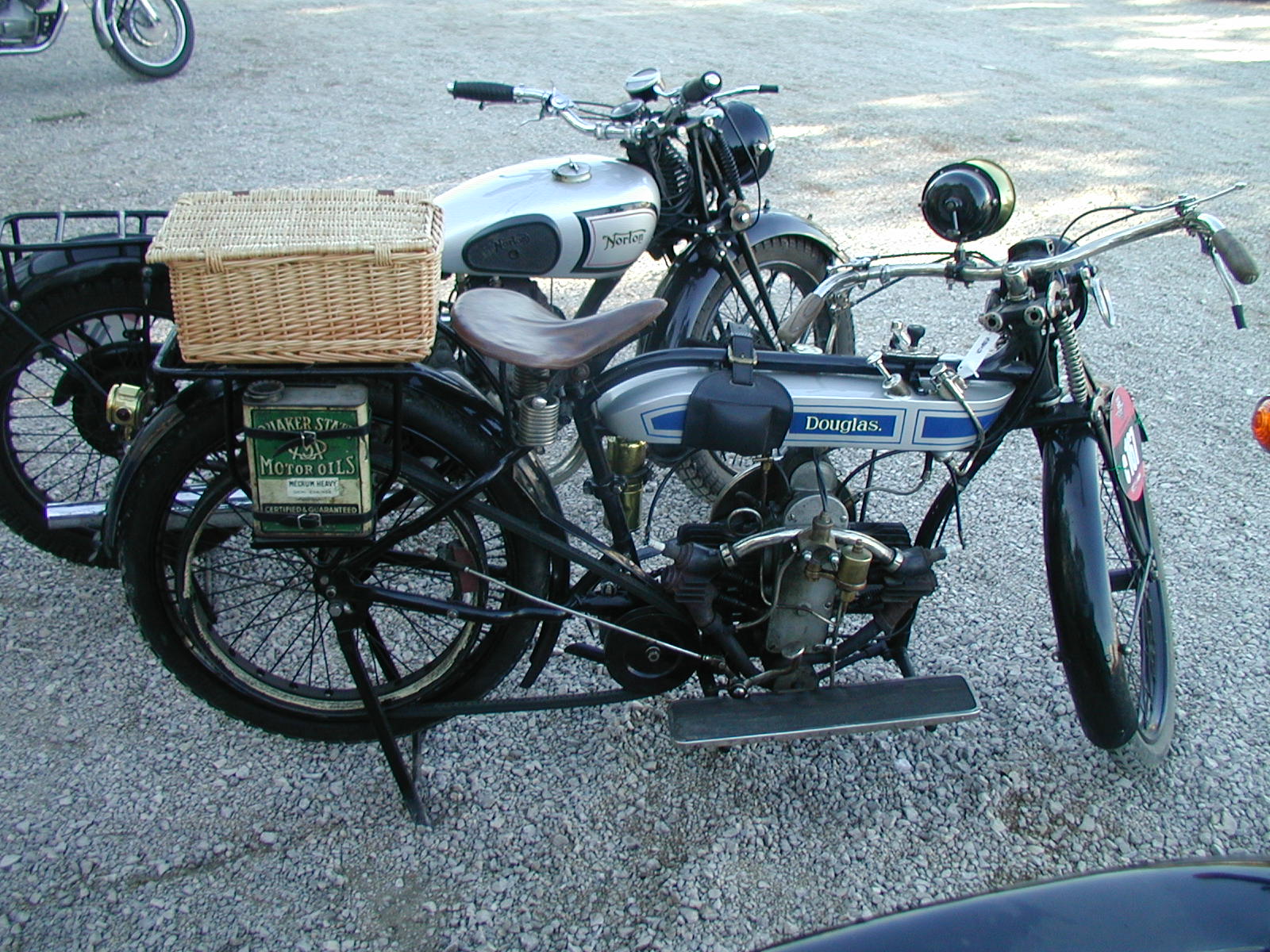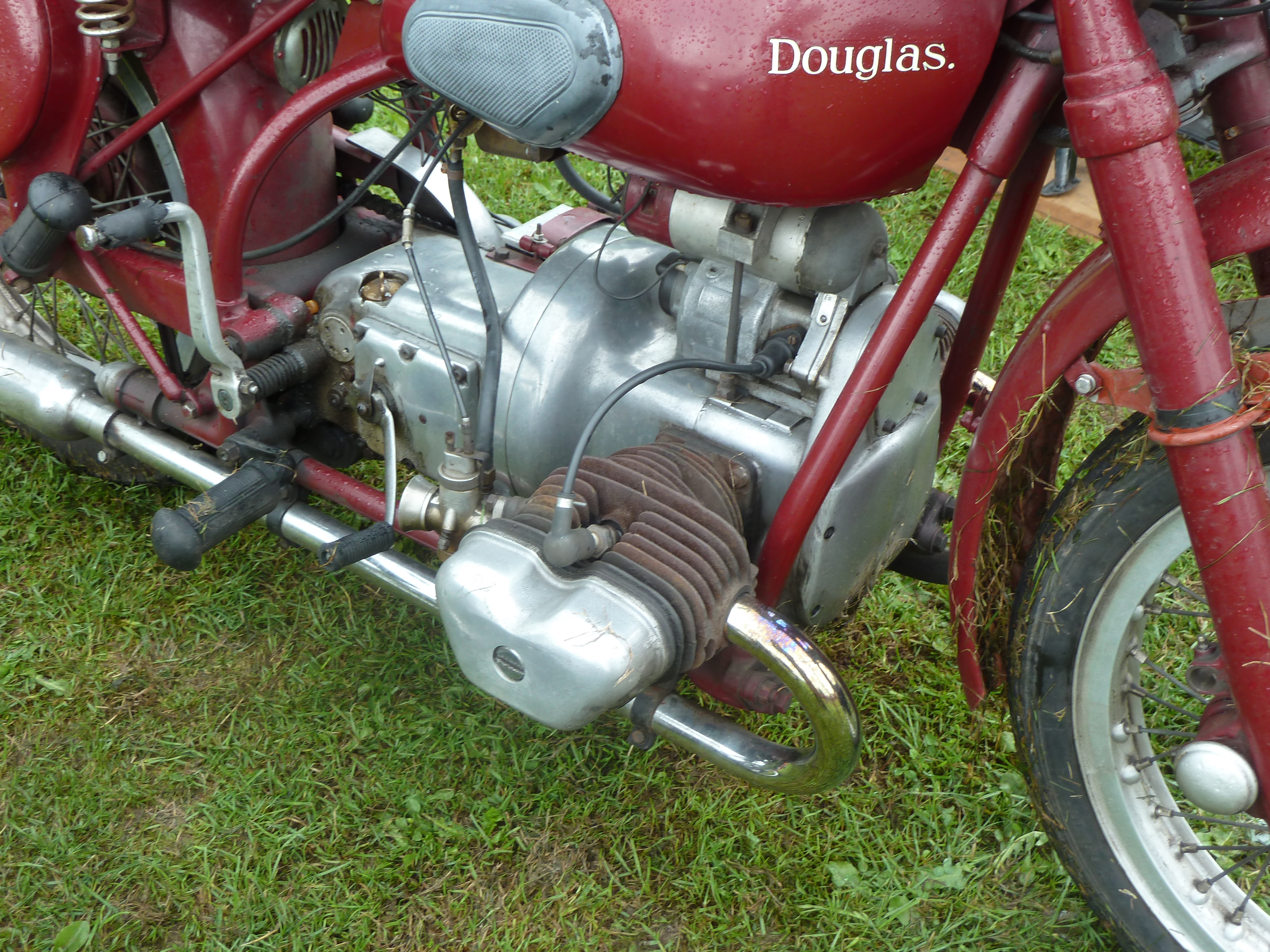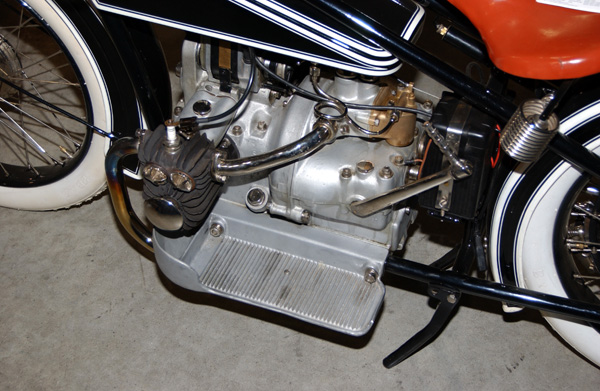|
Max Friz
Max Friz (October 1, 1883 – June 9, 1966) was a German mechanical engineer specializing in engine design. He was the key contributor of engine design and innovation that led to the founding of Bayerische Motoren Werke AG (BMW) in 1917. Early life Assumed to be originally from Urach, very little is known about Friz' youth. It is known however, that at a young age, he apprenticed to the Kuhn steam engine company in Cannstatt starting in 1898. In 1902, he enrolled at the Royal Building Trade School in Stuttgart-Esslingen furthering his engineering skills. In 1906, he was employed by Daimler Motoren Gesellschaft, in the Design Office, making major contributions to the design of the racing engine for the 1914 Mercedes Grand Prix car that won the French Grand Prix. Friz designed the first practical German aircraft engines in 1912-1913 while at Austro-Daimler. The engines had separate cylinders on the crankcase and an overhead camshaft driven by a vertical shaft and bevel gears. ... [...More Info...] [...Related Items...] OR: [Wikipedia] [Google] [Baidu] |
Bad Urach
Bad Urach () is a town in the district of Reutlingen, Baden-Württemberg, Germany. It is situated 14 km east of Reutlingen, at the foot of the Swabian ''Alb'' (or Swabian Alps in English), and is known for its spa and therapeutic bath. Neighbouring communities The following towns border Urach, and are also part of the district of Reutlingen. Clockwise from the north are: Hülben, Grabenstetten, Römerstein, Gutsbezirk Münsingen, Münsingen, St. Johann and Dettingen an der Erms. Bad Urach consists of the districts Hengen (687.01 ha; 854 inhabitants, at 31 December 2005), Seeburg (220.65 ha; 302 inhabitants), Sirchingen (481.78 ha; 1031 inhabitants), Bad Urach (2,797, 89 ha; 9289 inhabitants) and Wittlingen (1362.24 ha; 1112 inhabitants). With the exception of the district Bad Urach the neighborhoods form simultaneously villages within the meaning of Baden-Wuerttemberg Municipal Code. Urach includes the homestead of Güterstein. Among the districts Hengen and Sirching ... [...More Info...] [...Related Items...] OR: [Wikipedia] [Google] [Baidu] |
Reichswehr
''Reichswehr'' () was the official name of the German armed forces during the Weimar Republic and the first years of the Third Reich. After Germany was defeated in World War I, the Imperial German Army () was dissolved in order to be reshaped into a peacetime army. From it a provisional Reichswehr was formed in March 1919. Under the terms of the Treaty of Versailles, the rebuilt German army was subject to severe limitations in size and armament. The official formation of the Reichswehr took place on 1 January 1921 after the limitations had been met. The German armed forces kept the name 'Reichswehr' until Adolf Hitler's 1935 proclamation of the "restoration of military sovereignty", at which point it became part of the new . Although ostensibly apolitical, the Reichswehr acted as a state within a state, and its leadership was an important political power factor in the Weimar Republic. The Reichswehr sometimes supported the democratic government, as it did in the Ebert ... [...More Info...] [...Related Items...] OR: [Wikipedia] [Google] [Baidu] |
Victoria (motorcycle)
Victoria was a bicycle manufacturer in Nürnberg, Germany that made motorcycles from about 1901 until 1966. It should not be confused with a lesser-known, unrelated Victoria Motorcycle Company in Glasgow, Scotland that made motorcycles between 1902 and 1928. In its early decades Victoria in Nürnberg fitted proprietary engines purchased from various manufacturers including Fafnir, FN, Minerva and Zédel. 1920–1932 In 1920 Victoria launched the model KR 1, which has a 494 cc BMW twin-cylinder side-valve flat twin (boxer engine) mounted longitudinally in the motorcycle frame. The engine produced and transmission was via a two-speed gearbox. When BMW started making its own motorcycles, Victoria turned to making its own engines. In 1923 Victoria launched its KR 2, an overhead valve (OHV) flat twin producing . In 1924 Victoria followed this with the KR 3, which produces and has a 3-speed gearbox. In 1925 Victoria built Germany's first forced induction engine, and in 192 ... [...More Info...] [...Related Items...] OR: [Wikipedia] [Google] [Baidu] |
Douglas (motorcycles)
Douglas was a British motorcycle manufacturer from 1907–1957 based in Kingswood, Bristol, owned by the Douglas family, and especially known for its horizontally opposed twin cylinder engined bikes and as manufacturers of speedway machines. The company also built a range of cars between 1913 and 1922. History The brothers William and Edwin Douglas founded the Douglas Engineering Company in Bristol in 1882. Initially doing blacksmith work, they progressed to foundry work. Joseph F. Barter's Light Motors Ltd. was one of Douglas's customers. Barter built a single-cylinder bicycle engine between 1902 and 1904; he then developed the Fée bicycle engine system. The Fée's 200 cc flat-twin engine was mounted in-line with the frame, using chain drive to a countershaft beneath (with clutch); this then used a drive belt to power the bicycle's rear wheel. Barter founded Light Motors Ltd. to build the Fée system. Production began in 1905; the Fée's name was anglicized to Fairy ... [...More Info...] [...Related Items...] OR: [Wikipedia] [Google] [Baidu] |
BMW M2B15
The BMW M2B15 was BMW's first flat-twin engine. Manufactured from 1920 to 1923, the M2B15 was intended to be a portable industrial engine, but it was used by several German motorcycle manufacturers to power their motorcycles. In 1920, BMW engineer Max Friz reverse-engineered the engine of foreman Martin Stolle's 1914 Douglas motorcycle and developed a similar 500 cc side-valve flat engine from it. This was referred to internally as the Type M2B15 and offered for sale officially as the "Bayern Motor". The engine was tried out by various motorcycle manufacturers. Starting in 1920, Victoria of Nuremberg Nuremberg ( ; german: link=no, Nürnberg ; in the local East Franconian dialect: ''Nämberch'' ) is the second-largest city of the German state of Bavaria after its capital Munich, and its 518,370 (2019) inhabitants make it the 14th-largest ... used the engine in their KR 1 motorcycle, and other manufacturers such as SMW and Bison also fitted it. Bayerische Flugz ... [...More Info...] [...Related Items...] OR: [Wikipedia] [Google] [Baidu] |
Flat-twin
A flat-twin engine is a two-cylinder internal combustion engine with the cylinders on opposite sides of the crankshaft. The most common type of flat-twin engine is the boxer-twin engine, where both pistons move inwards and outwards at the same time. The flat-twin design was patented by Karl Benz in 1896 and the first production flat-twin engine was used in the ''Lanchester 8 hp Phaeton'' car released in 1900. The flat-twin engine was used in several other cars since, however a more common usage is in motorcycles; early models oriented the cylinders in line with the frame, however later models switched to the cylinders being perpendicular to the frame to provide even cooling across both cylinders. Flat-twin engines were also used in several aircraft up until the 1930s and in various stationary applications from the 1930s to the 1960s. The Australian lawnmower manufacturer Victa also produced a flat-twin engine push mower from August 1975 to 1980 dubbed as the ‘Twin 500’ and � ... [...More Info...] [...Related Items...] OR: [Wikipedia] [Google] [Baidu] |
R32-engine
R3, R.III or R-3 or R/3 may refer to: Aviation * Aviatik R.III, a German aircraft * DFW R.III, a World War I German bomber aircraft * Ross R-3 glider * Tupolev R-3 Soviet reconnaissance aircraft * Yakutia Airlines IATA airline designator Entertainment * BBC Radio 3, a radio operated by the BBC within the United Kingdom * ''R3'' (TV series), produced by the BBC between 1964 and 1965 * Region 3, the DVD region code for Southeast Asia, South Korea, Republic of China (Taiwan), Hong Kong, Macau * ''Resistance 3'', the third game in the ''Resistance'' series * ''R3'' (video game), a computer game for the Amiga series of computers in 1995 Military * Version of the German Rheintochter ground to air missile * R-3 (missile), the Vympel K-13, an air-to-air missile also known as R-3S in Soviet service * R-3 (tank), a proposed Romanian tank design for use in World War II * USS R-3 (SS-80), a 1919 R-class coastal and harbor defense submarine of the United States Navy Math and Science ... [...More Info...] [...Related Items...] OR: [Wikipedia] [Google] [Baidu] |
Flat Engine
A flat engine is a piston engine where the cylinders are located on either side of a central crankshaft. Flat engines are also known as horizontally opposed engines, however this is distinct from the less common opposed-piston engine design, whereby each cylinder has two pistons sharing a central combustion chamber. The most common configuration of flat engines is the boxer engine configuration, in which the pistons of each opposed pair of cylinders move inwards and outwards at the same time. The other configuration is effectively a V engine with a 180-degree angle between the cylinder banks; in this configuration each pair of cylinders shares a single crankpin, so that as one piston moves inward, the other moves outward. The first flat engine was built in 1897 by Karl Benz. Flat engines have been used in aviation, motorcycle and automobile applications. They are now less common in cars than straight engines (for engines with less than six cylinders) and V engines (for en ... [...More Info...] [...Related Items...] OR: [Wikipedia] [Google] [Baidu] |
BMW R32
The BMW R32 was the first motorcycle produced by BMW under the BMW name. An aircraft engine manufacturer during World War I, BMW was forced to diversify after the Treaty of Versailles banned the German air force and German aircraft manufacture. BMW initially turned to industrial engine design and manufacturing. History In 1919, BMW designed and manufactured the flat-twin M2B15 engine for Victoria Werke AG of Nuremberg. The engine was initially intended as a portable industrial engine, but found its main use in Victoria motorcycles. The engine was also used in the Helios motorcycle built by Bayerische Flugzeugwerke, which was later merged into BMW AG. Bayerische Flugzeugwerke also manufactured a small two-stroke engined motorcycle, called the Flink, which was not successful. After the merger, General Director of BMW Franz Josef Popp asked Design Director Max Friz to assess the Helios motorcycle. Upon completing his assessment, Friz suggested to Popp that the best thing th ... [...More Info...] [...Related Items...] OR: [Wikipedia] [Google] [Baidu] |
BMW IVa
The BMW IV was a six-cylinder, water-cooled inline aircraft engine built in Germany in the 1920s. Power was in the 180 kW (250 hp) range. World record On 17 June 1919 Franz Zeno Diemer flew a DFW F37, powered by a BMW IV engine to an unofficial world record height of from Oberwiesenfeld, reaching that altitude in 89 minutes. Diemer stated at the time, "I could have gone much higher, but I didn't have enough oxygen." Applications * Arado SC I The Arado SC I was a biplane trainer developed in Germany in the 1920s. It was based on the S I, but powered by a far more powerful inline engine. Accordingly, the structure received considerable strengthening. The aircraft was intended for t ... * Albatros L 72 * Albatros L 74 * Caspar C 27 * DFW F37 * Heinkel HD 22 * Heinkel HD 24 * Heinkel HD 39 * Junkers A 35 * Junkers F 13 * LFG V 59 * LFG V 60 * Airco DH.9A#Variants, Polikarpov R-1 BMW (Soviet unlicensed copy of Airco DH.9A) * Rohrbach Ro VII Robbe * Rohrbach ... [...More Info...] [...Related Items...] OR: [Wikipedia] [Google] [Baidu] |
Franz-Zeno Diemer
Franz Zeno Diemer (3 July 1889, in Oberammergau – 27 April 1954, in Friedrichshafen) was a flight pioneer in Bavaria, setting a number of world records, and Flight Officer for Bavarian Lifeguard Regiment. Early life He was born in Oberammergau, Bavaria, the son of the painter, Michael Zeno Diemer and his wife, Hermine (née Von Hillern), eldest daughter of the writer, Wilhelmine von Hillern. Trained as an engineer, in 1912 he joined the Bavarian Lifeguard Regiment, at that time a flying squadron. He was a member of "Bogohl 8" (the bomber squadron operated by the Senior Military Command) with the rank of Flying Officer. In July 1921 he joined Dornier in Friedrichshafen as test pilot and for trial flying of new aircraft. In 1922, after Dornier's move to Marina di Pisa Italy, he worked as test pilot, head of the aerodynamics department and manager of the advertising department. From 1935 on he worked exclusively as manager of the advertising department and was editor in chi ... [...More Info...] [...Related Items...] OR: [Wikipedia] [Google] [Baidu] |





